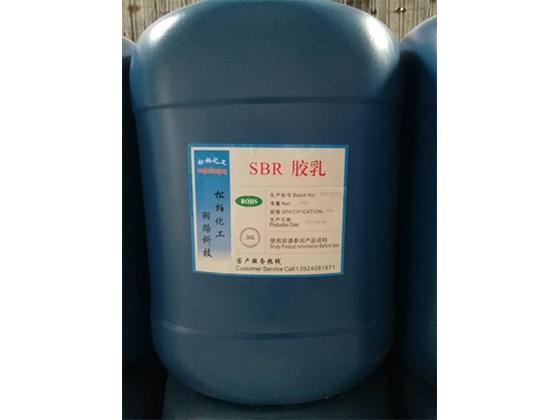行业知识
What are the main factors affecting the performance of SBR latex?
The main indicators for determining the performance of SBR latex are the unit composition, gel content, particle size and glass transition point of the latex.
The original SBR latex is a dispersion of rubber in water obtained by copolymerization of styrene and butadiene monomers. SBR is now a polymer composed of a variety of monomers. Specifically, it is a coated SBR. In order to improve printing performance, the ratio of methyl methacrylate and acrylonitrile in the polymer exceeds 40%. In addition, in order to make SBR latex and coating have certain mechanical stability and chemical stability, SBR latex must also be used alone or simultaneously with acrylic acid, methyl propionic acid, dibasic acid, maleic acid or enriched acid, etc. The latex and coating are hydrocarbyl modified. Maleic acid, itaconic acid, etc. It is copolymerized. For the same purpose, it can be copolymerized with a monomer having a hydrocarbon group such as a 2-alkyl acrylate of an acrylamide, methacrylamide or amide monomer. These functional monomers typically comprise from 2% to 6% of SBR latex polymer.
Gel Content of SBR Latex SBR latex is a bridged polymer whose average molecular weight is difficult to determine, so the gel content reflects the relative size of its molecules. Typically, the film is dissolved in a particular solvent and the insoluble portion is a percentage of the original film that becomes a gel. The gel content is mainly controlled by the type, amount and mode of addition of the chain transfer agent. The gel content affects the dry tensile strength, anti-foaming properties, and the like of the paper. In general, the higher the gel content, the higher the dry pull strength and vice versa.
The average particle size of SBR latex for coatings is 80-250 nm, and the distribution is generally narrow. In order to improve the fluidity and printing performance of coatings, products that control a specific particle size distribution are also increasing. The particle size of the SBR latex is generally controlled by the type, amount and polymerization conditions of the latex. The smaller the particle size of the SBR latex, the lower the high shear viscosity of the coating. The better the water retention, the faster the coating speed and the higher the solids content of the coating.
The glass transition point is the hardness index of the SBR latex at room temperature. In general, the greater the degree of polymerization of styrene in the latex, the higher the hardness, the greater the polymerization rate of butadiene and the lower the hardness. Generally, the hardness of the SBR latex is adjusted by the polymerization ratio of styrene and butadiene monomers. However, SBR emulsions with multiple glass transition points are also used. The glass transition point affects the quality and printability of the paper. The higher the glass transition point, the higher the stiffness, but the lower the glass transition point, the better the dry tensile strength.

Related Industry Knowledge
- What are the PTFE surface treatment methods?
- What are the current methods for processing PTFE micropowder abroad?
- Battery adhesive performance requirements and characteristics
- Some common applications of SBR latex
- Where is the application of high purity potassium hydroxide?
- What are the performance advantages of carboxylated styrene-butadiene latex?
- What details should be paid attention to when using lithium hydroxide?
- Chemical reaction and use of lithium hydroxide
- Sodium hydroxide harm to the human body and first aid measures


